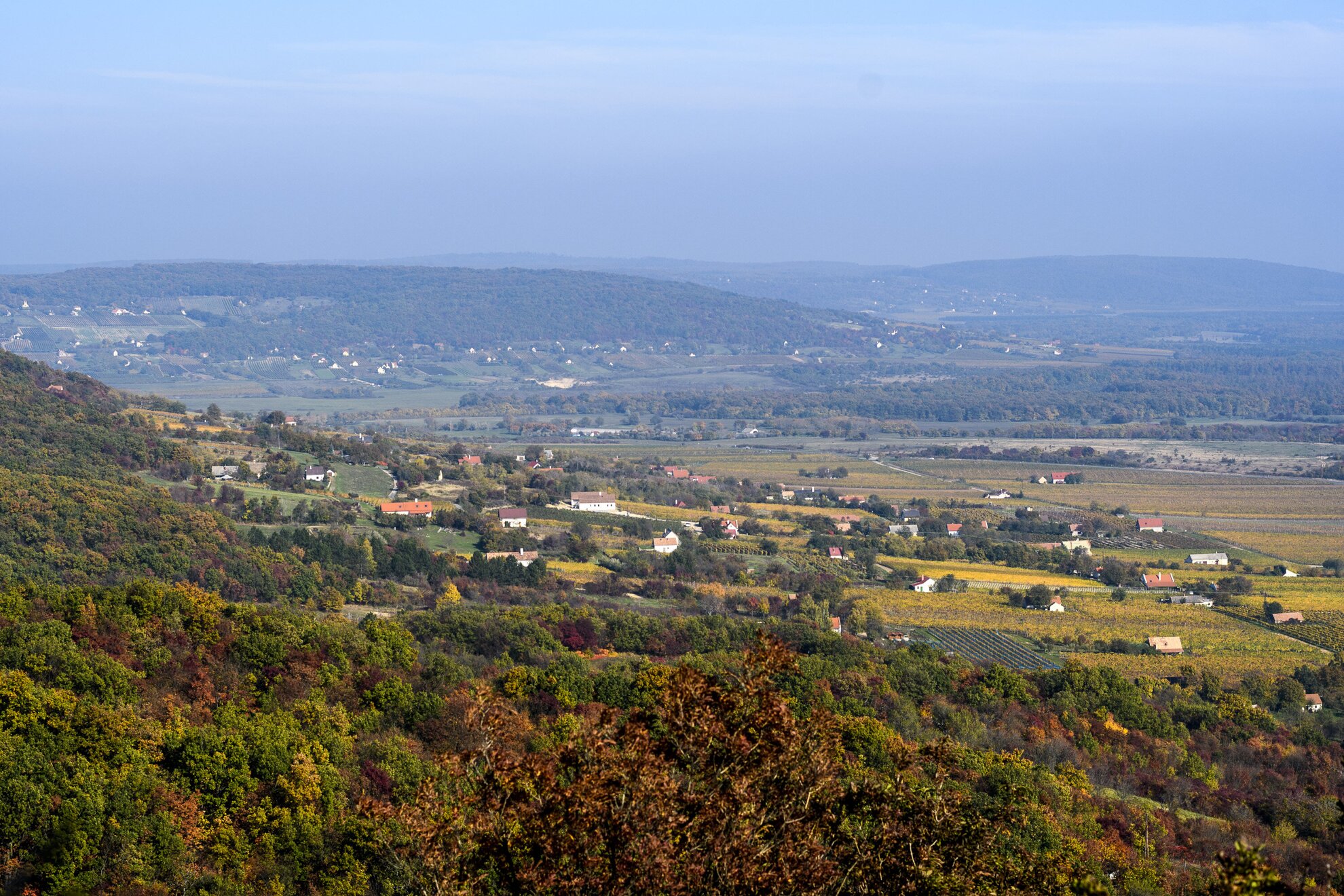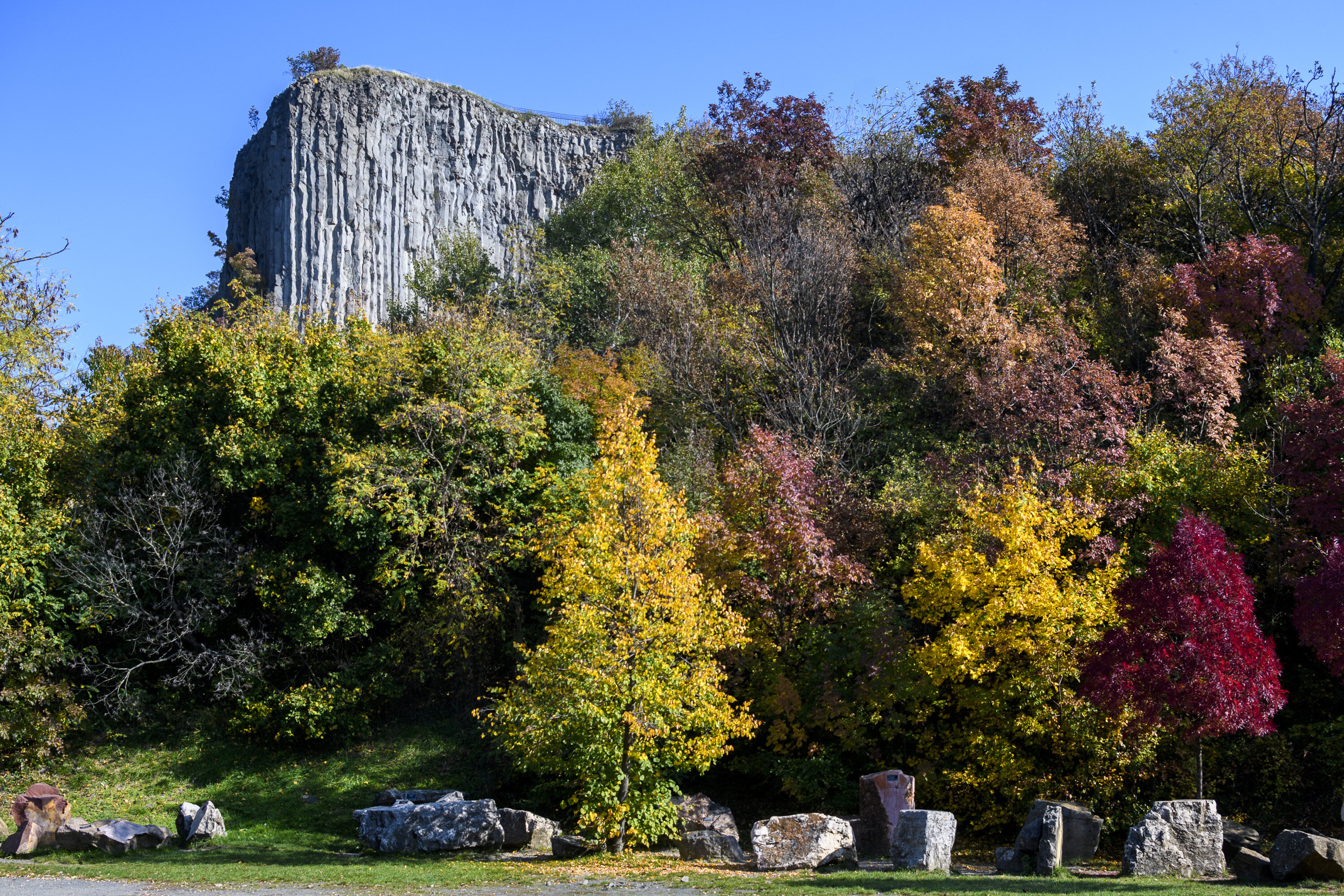Climbing Hegyestű is not an exceptionally long or hard hike yet the view is spectacular and, especially when the sun is out, it’s rather unique. Often called as the gatekeeper of Káli-medence (Káli Basin), this basalt frustum was not only shaped by nature, but also by the mining of basalt.
The weather was lovely on the last spring-like weekend of fall when we visited Hegyestű. Our destination was visible from afar as we were driving on Road 71 – it’s a spot that's impossible to miss.
We left the car at the football field near the post office of Monoszló to avoid looking like the kind of tourists who take their car as far as they can. The 337 high Hegyestű is about a 40-45 minutes long pleasant walk away from here.
The tiny Nagykő Street (“Big Rock Street”) opposite the field helps us navigating. The street is short and leads to the forest after a slight turn to the right – make sure to pay attention to the land borders in order to avoid trespassing.
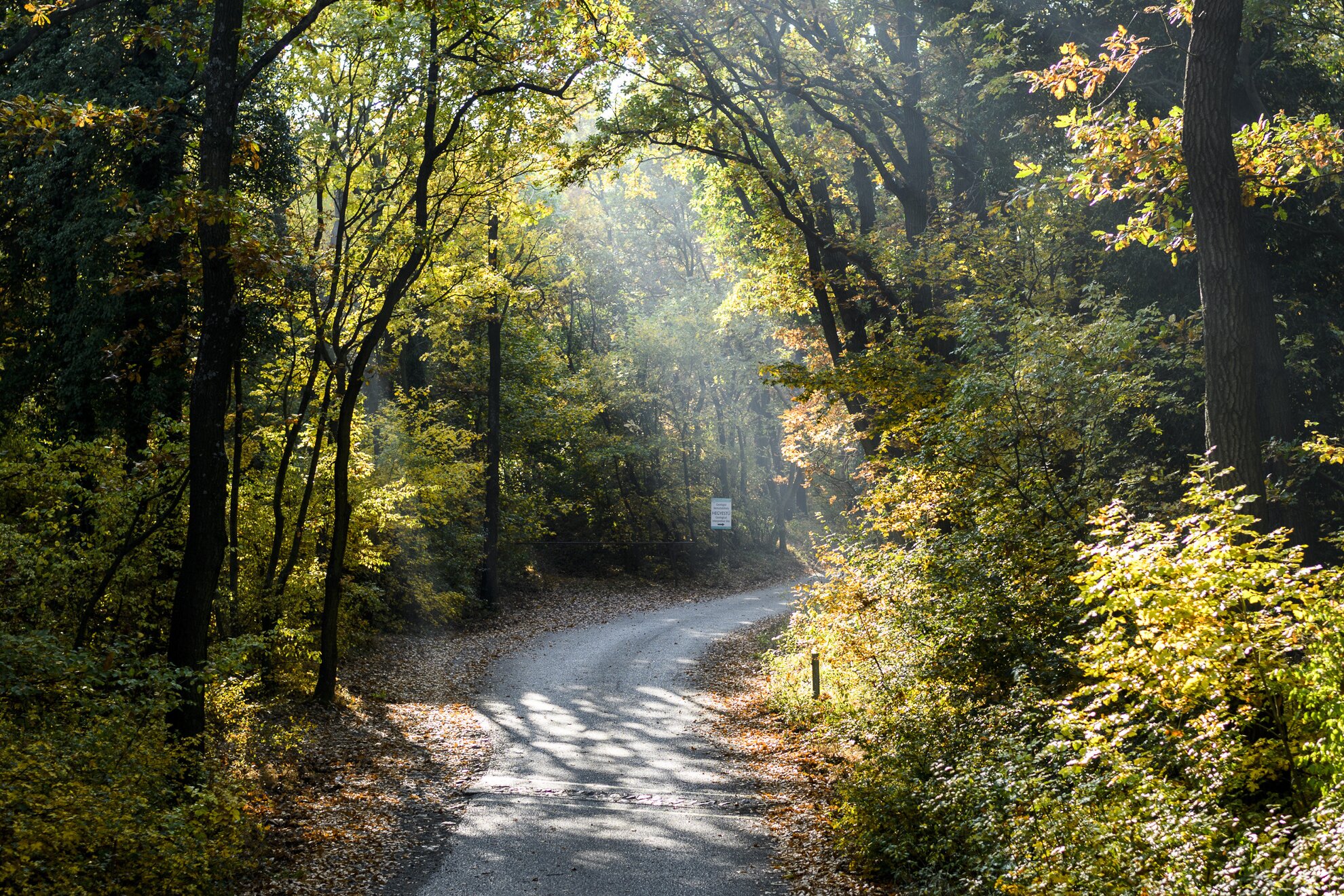
We soon realize that this forest isn’t our final destination and there’s still a lot of walking to do: first we have to get out of this miniature forest, then, passing a farm building, we have to continue on an asphalt road.
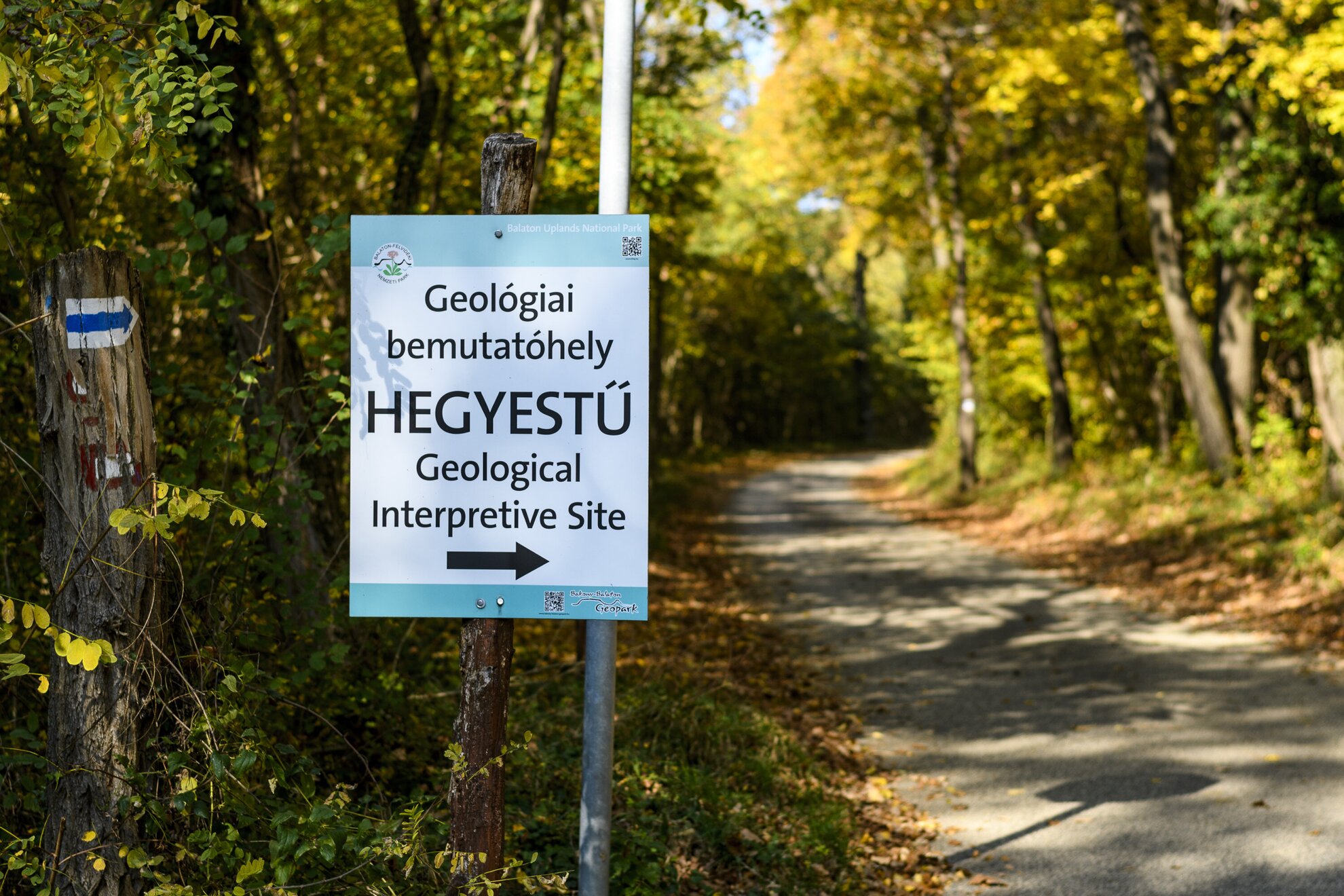
There’s another, longer trail called Mókus-körút (“Squirrel Trail”) that goes around Hegyestű, but since it’s already pretty late in the afternoon, we would rather not risk losing daylight and/or missing the opening hours of the geological exhibition site.
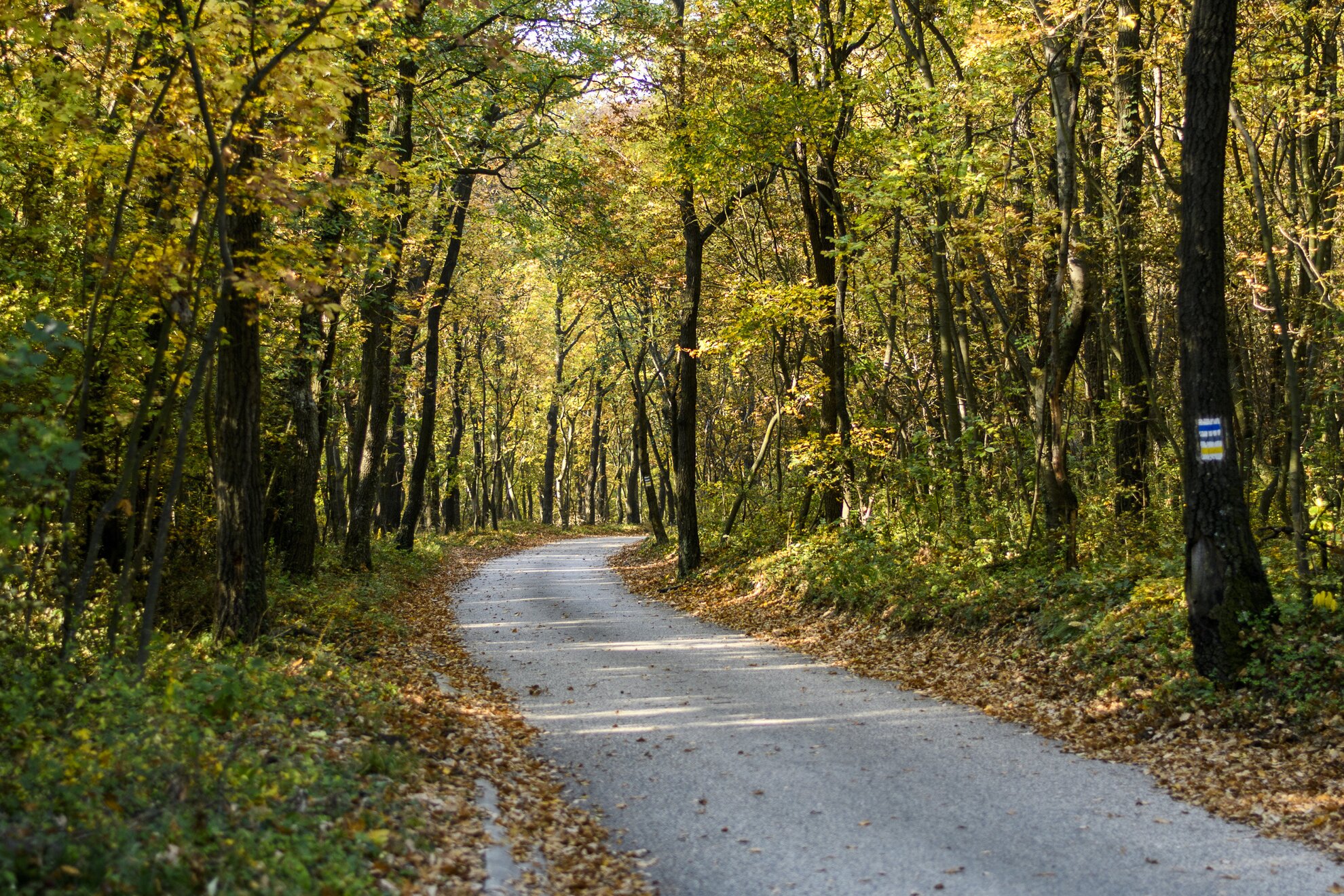
There’s barely any traffic making it look like we are the sole warriors of the forest, even though there’s asphalt under out feet. The trail to the top starts with a turn of about 270 degrees to the left. Cars can be around, so be careful.
This walking-on-asphalt trip is great for those who only have a little time, because it’s quick and the easy hike can be celebrated at one of the local restaurants after about one and a half hours.
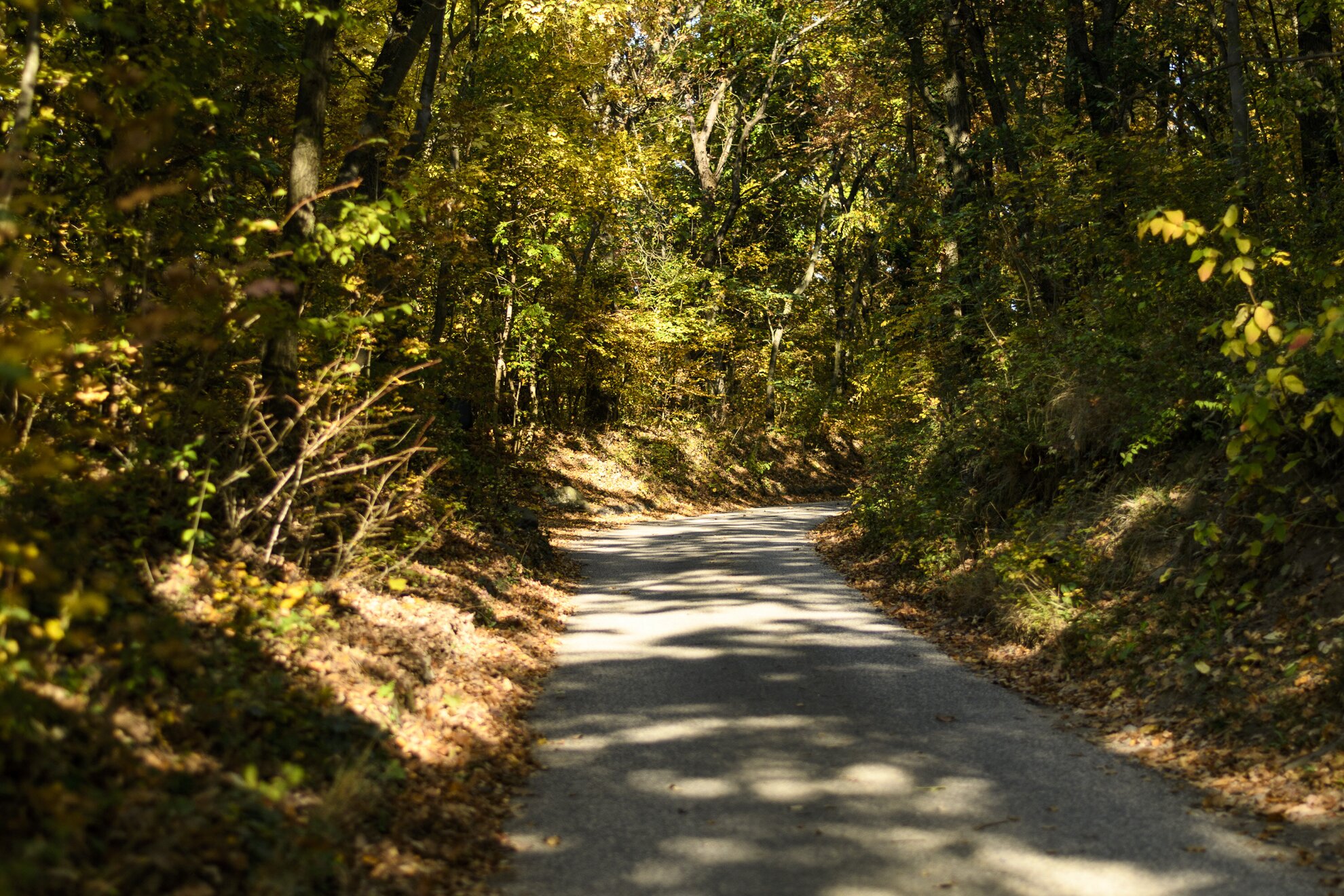
So we don’t mind the asphalt, instead we are enjoying the sight of the forest: some leaves are bright red, while others are mustard yellow, giving a color to fall. We tread slowly because we like to enjoy the road.
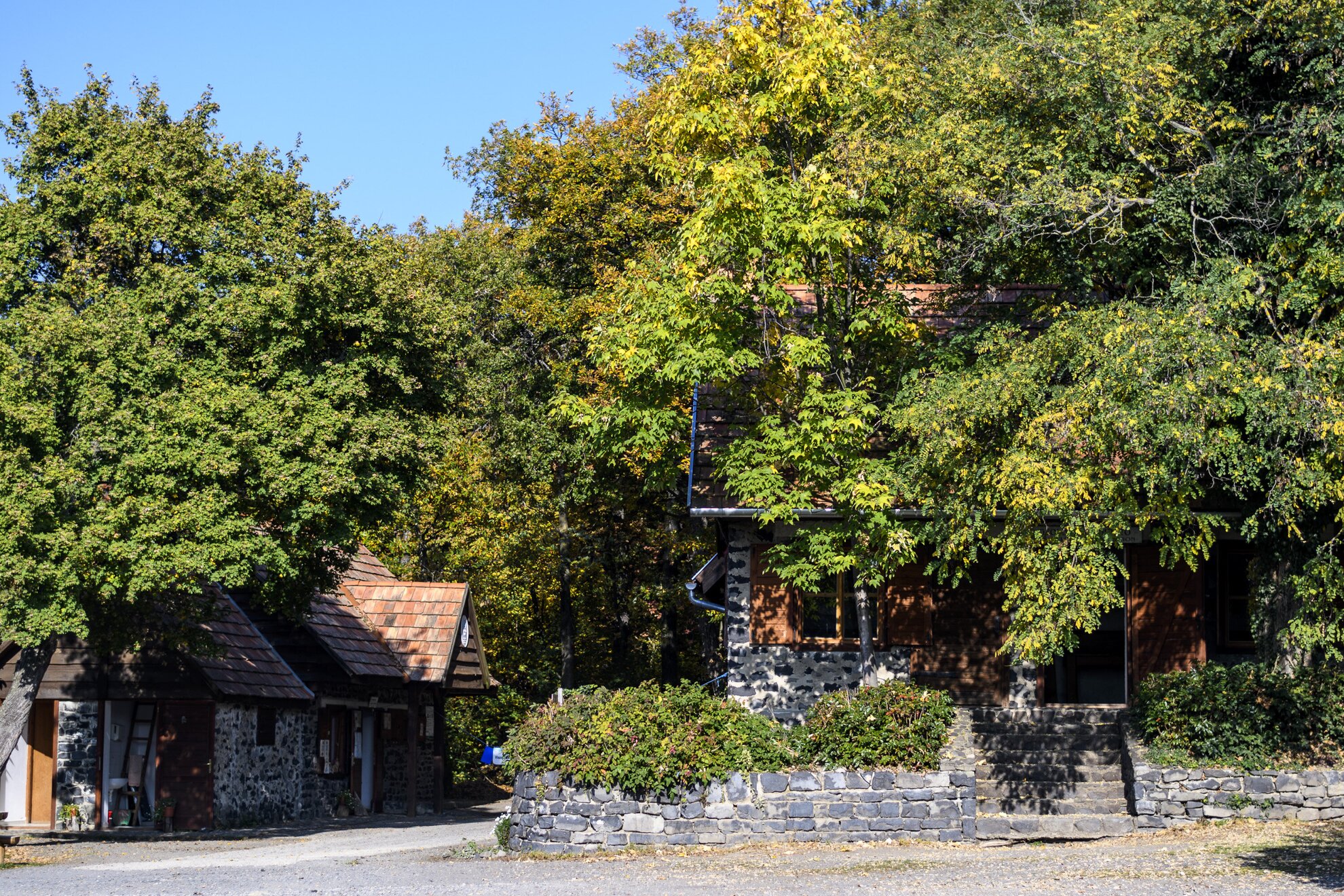
A sudden bend to the right and we can see the entrance of the geological exhibition site. A sign hanging on climbing rope lets us know that the ticket office is to the right – the tickets cost 700 forints for adults, while it’s 400 forints for children under 14.
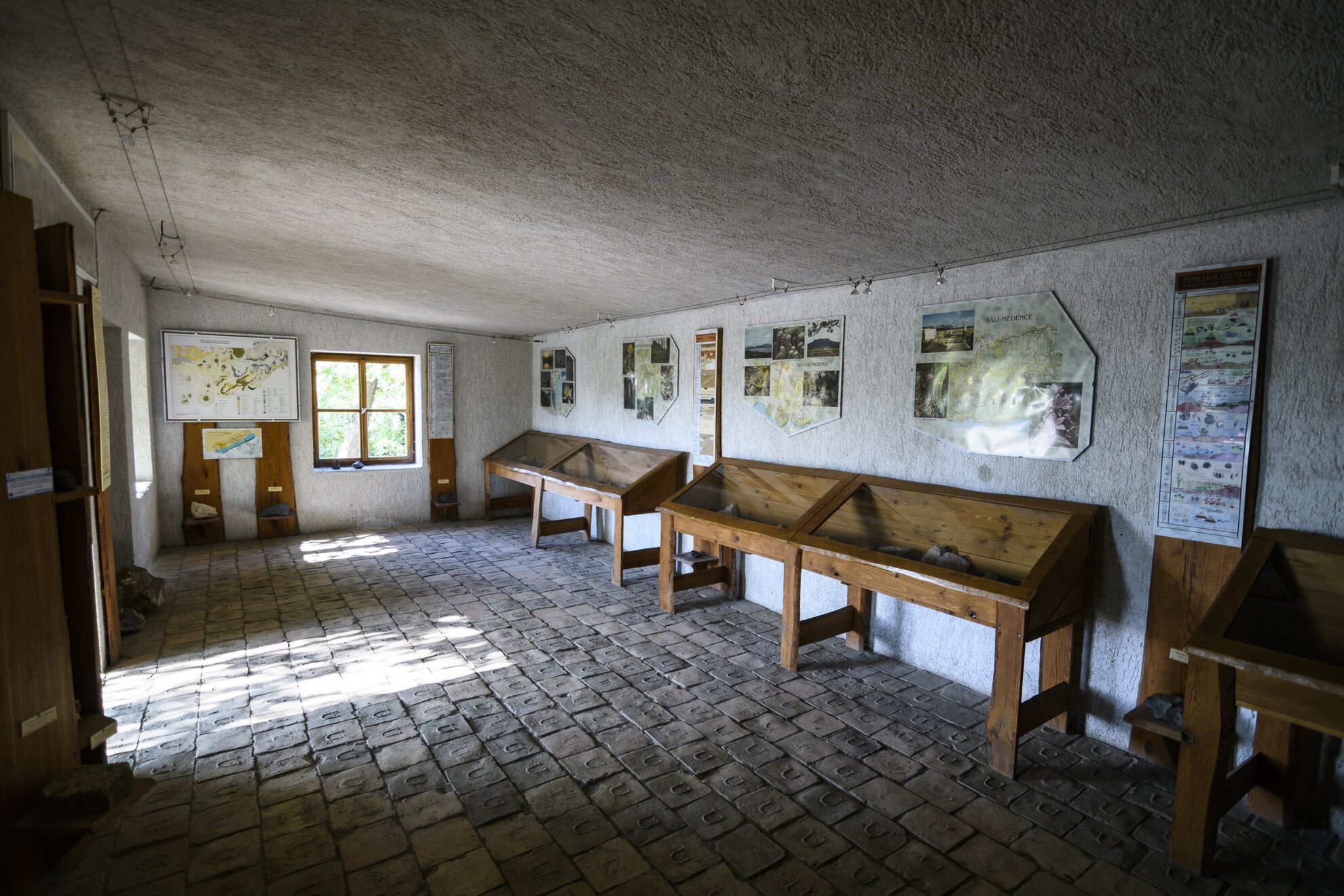
We inspect the stone collection: they have everything – limestone, tuff, dolomite, etc. Interestingly enough, the limestone was cut and grinded in a way that it looks surprisingly like marble.
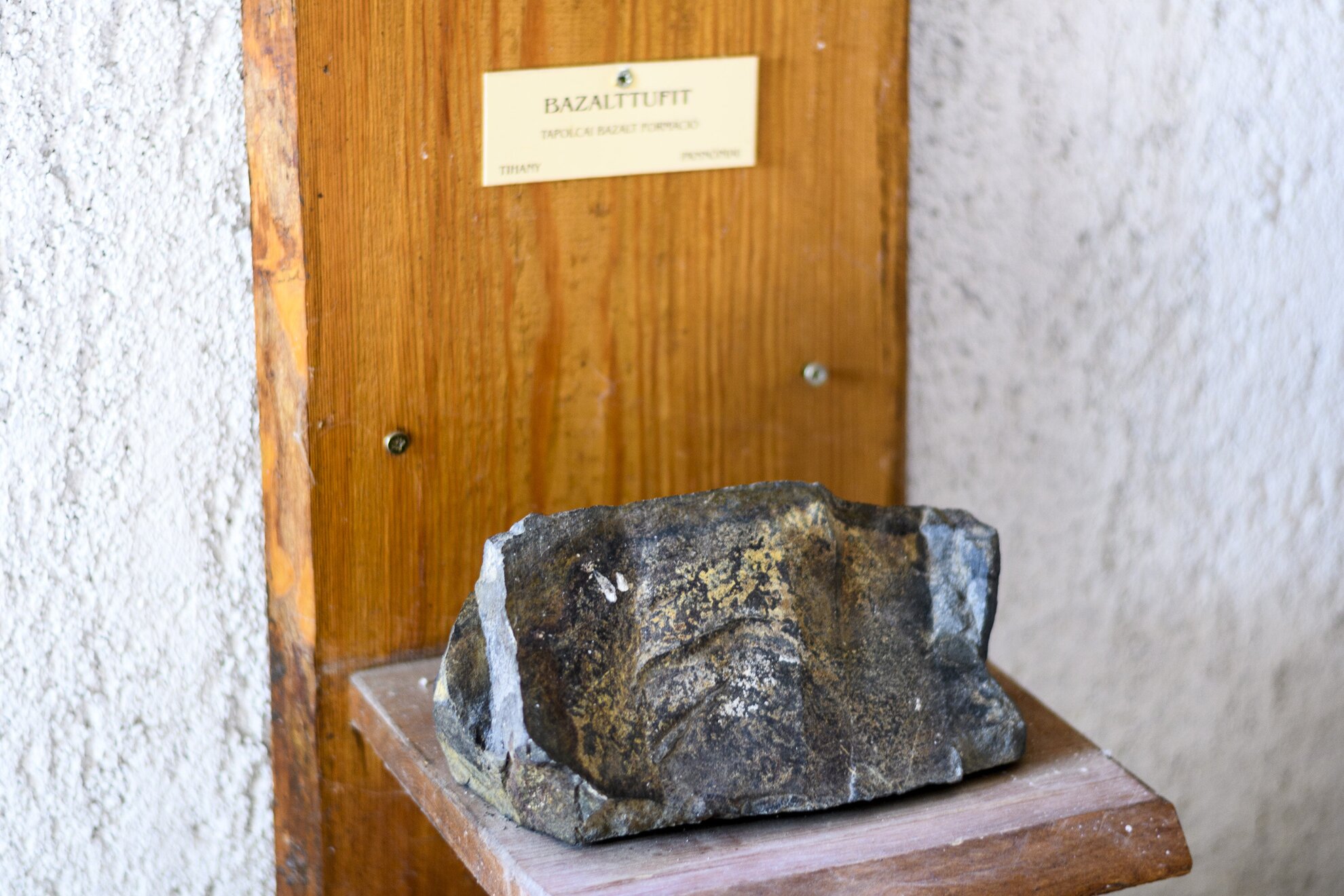
The sun is shining on the top of the half-mined Hegyestű – its unique shape was caused by the mining of the hill from 1930 to 1970 when almost all of it was taken away – and from this angle it feels like we are at Colorado Plateau’s Monument Valley.
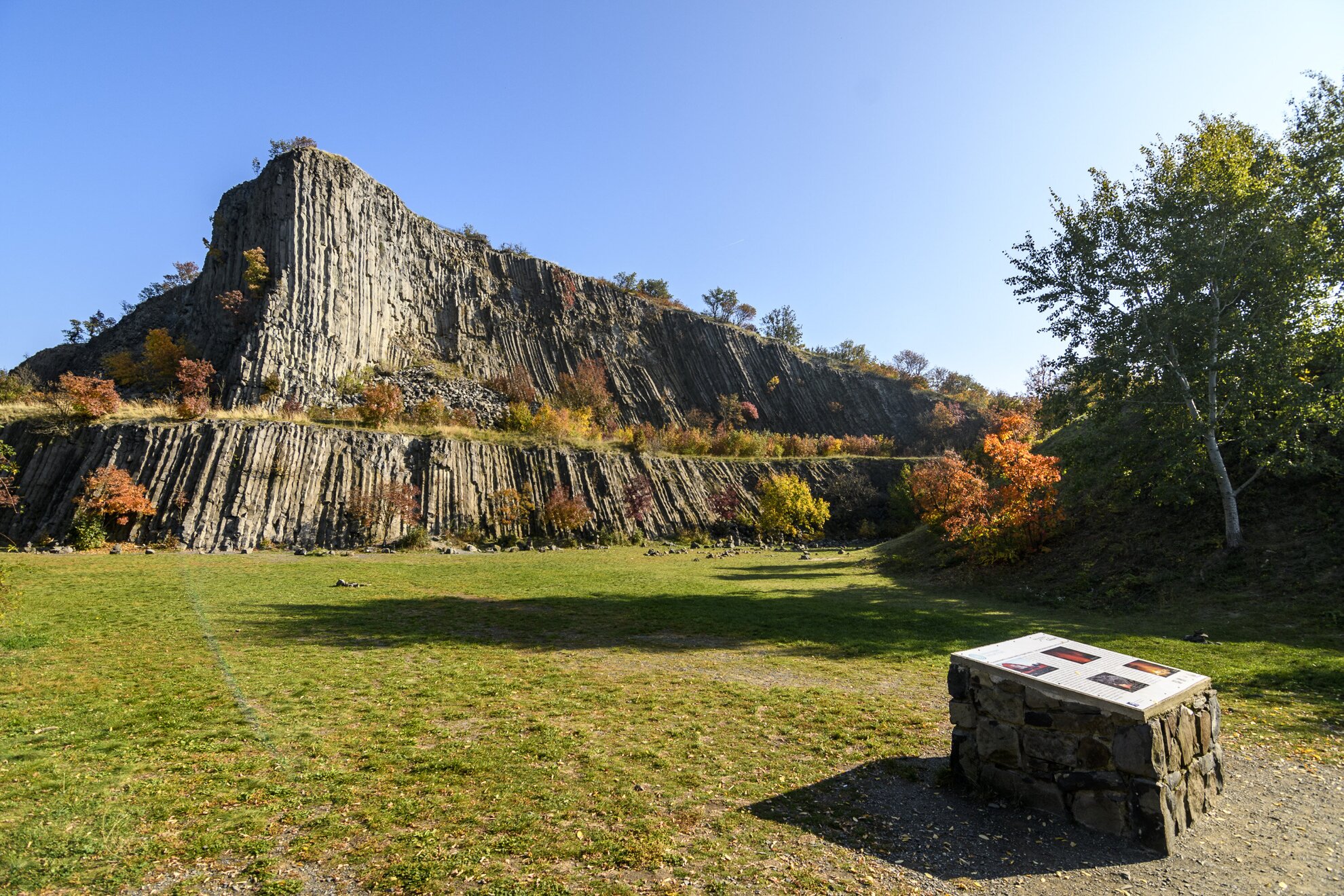
The basalt summit that congealed inside the former volcano and then cracked looks exactly like the buttes that the Navajos called bear paws. That’s a good thing – maybe the kids who love books and movies about Native Americans will enjoy this short, but steep hike a lot more.
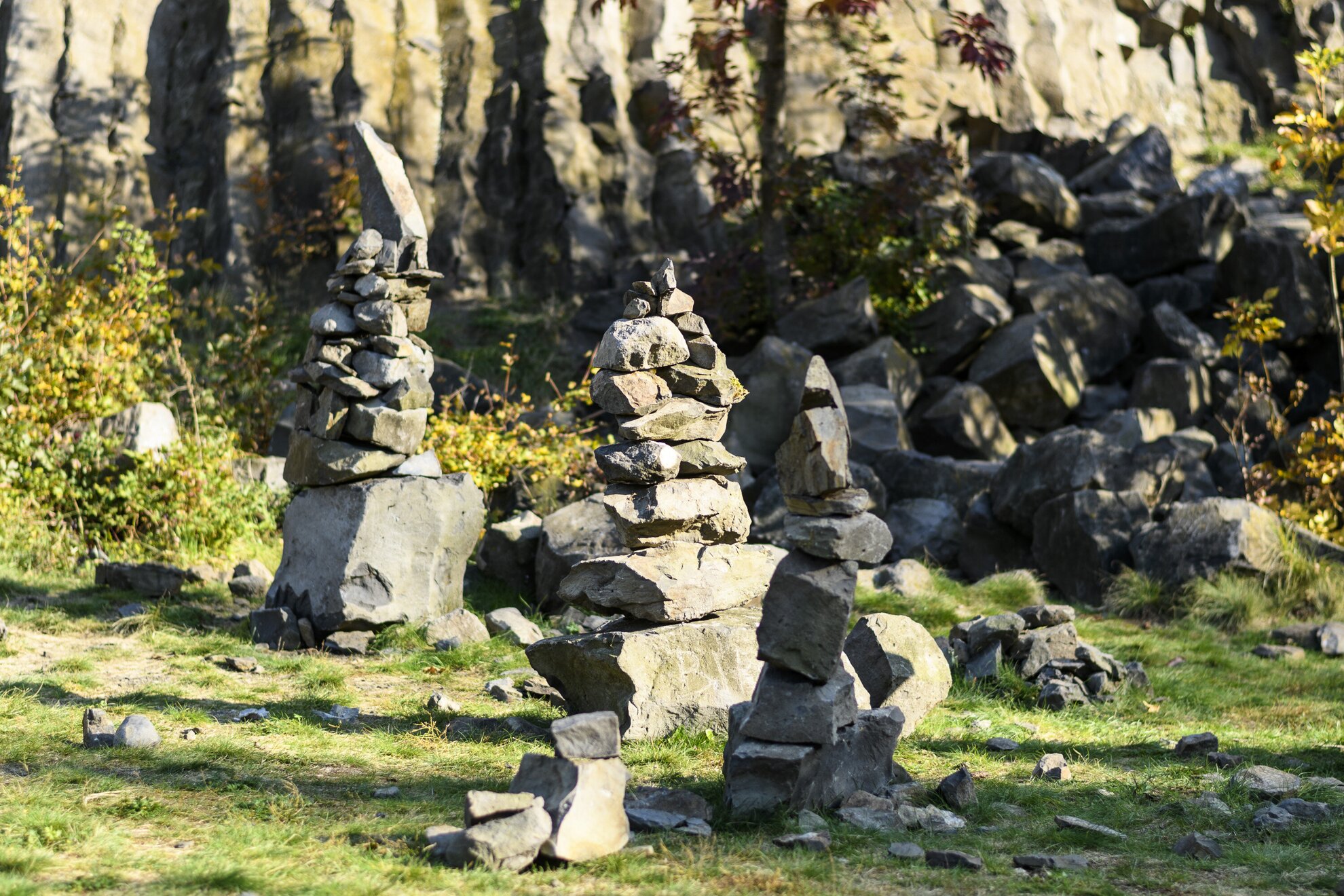
Looking at it from the parking lot, there’s an exhibition hall opposite the entrance – it’s the called the Geological Site where we can have a crash course on the local stones and the area’s geological structure. It takes about 10-25 minutes to check this out, depending on how interested we are.
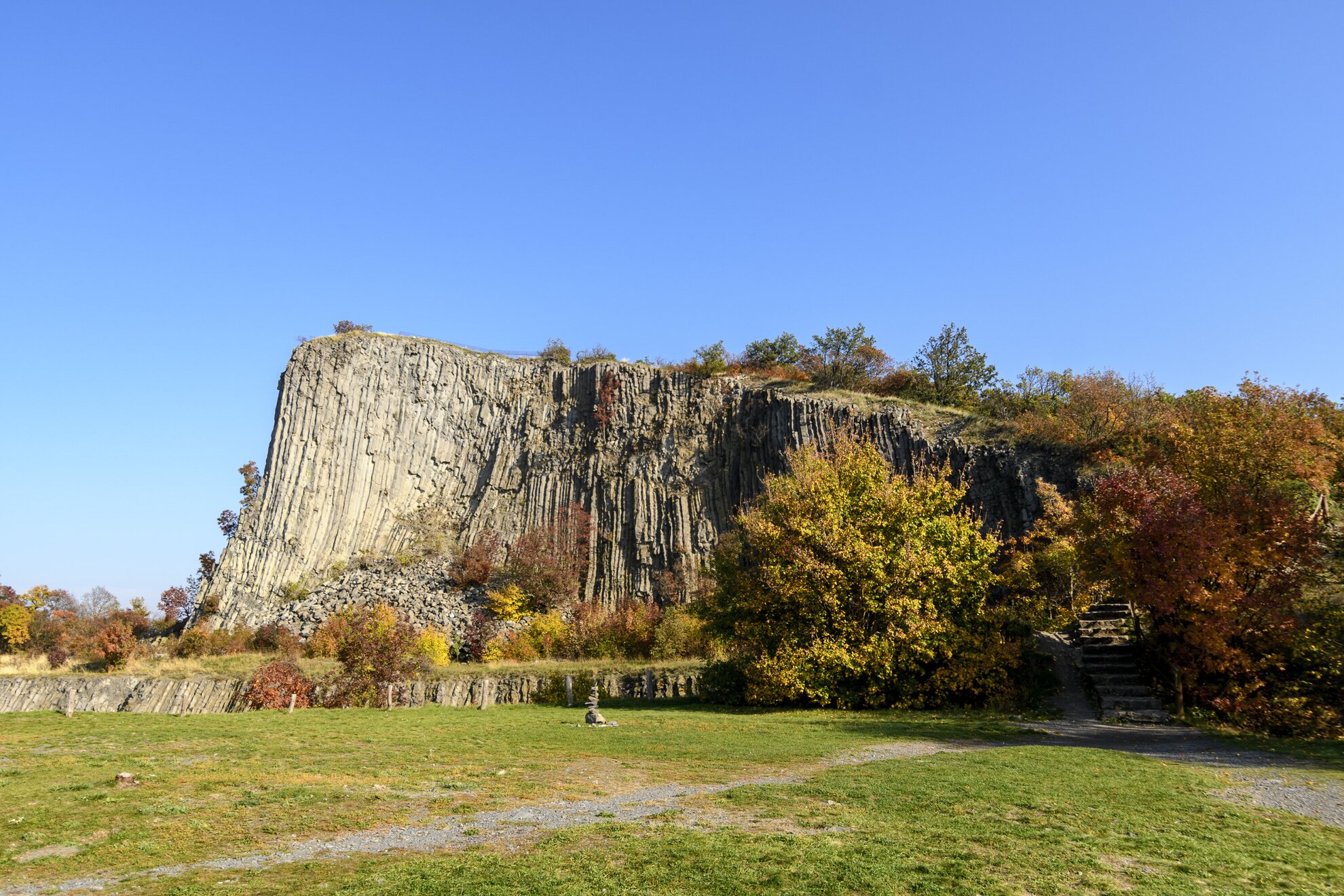
Stepping out of the hall, there’s a short flight of stairs to the left that leads to a clearing at the foot of the needle, which is also a stone-men park.
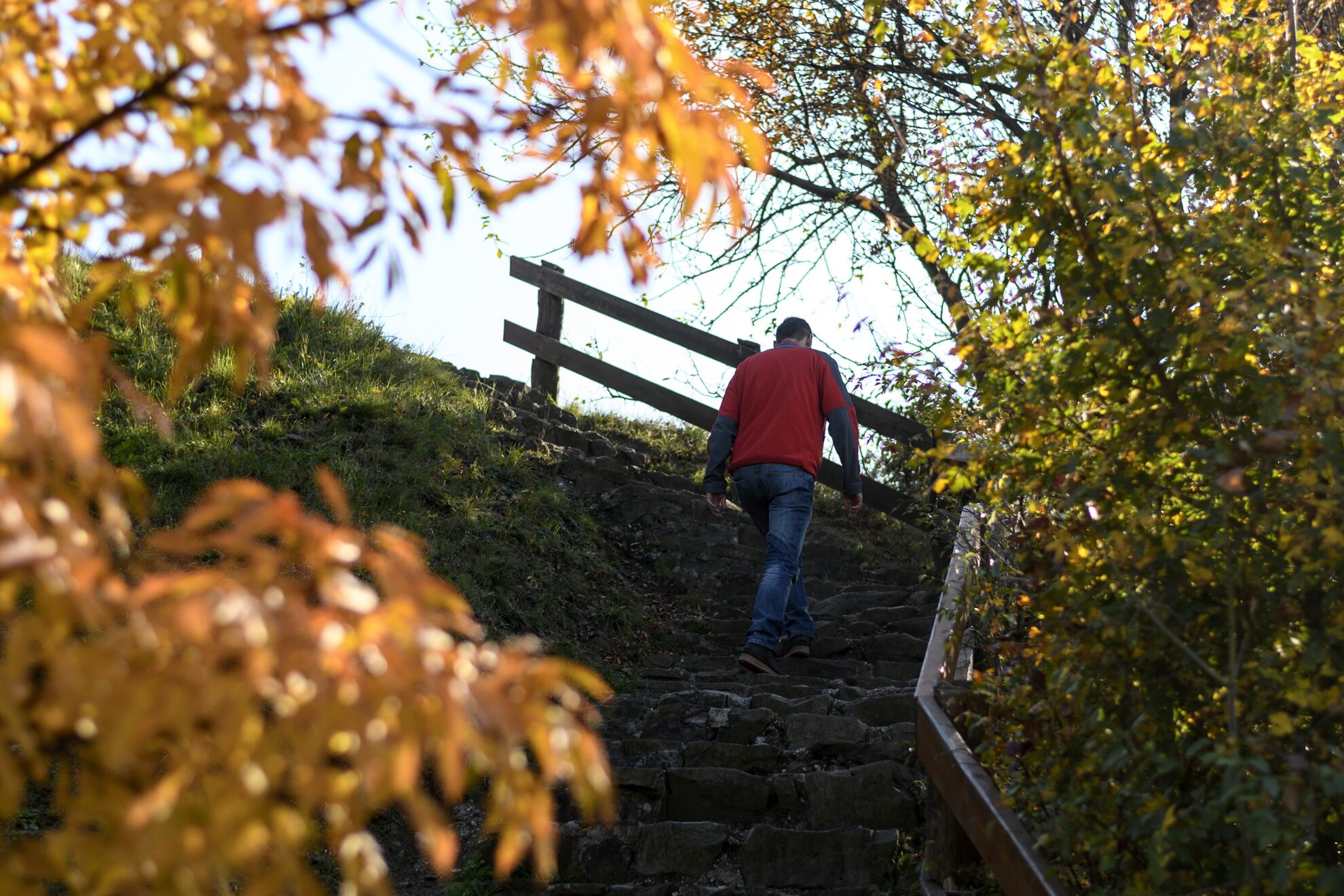
To the right there’s another stair leading to Hegyestű itself, but the clearing also has a great view of Lake Balaton, and it looks like people often have picnics here. There’re some more steps and these ones lead to the top.
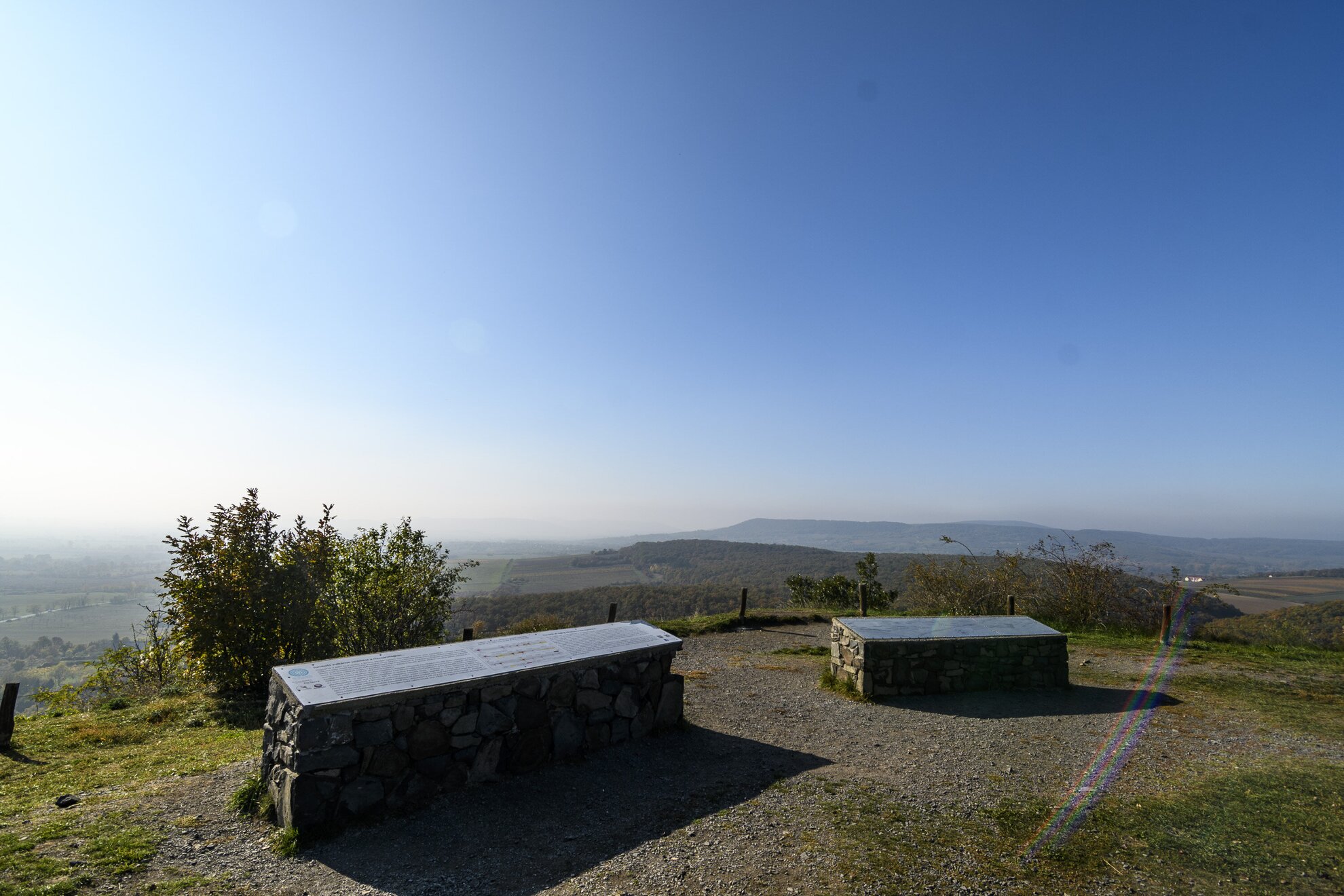
Although the trail isn’t long, there are a lot of stairs so we would only recommend it to people who have no problem with some cardio; however, the challenge is definitely worth it as the view from up there will make it all up.
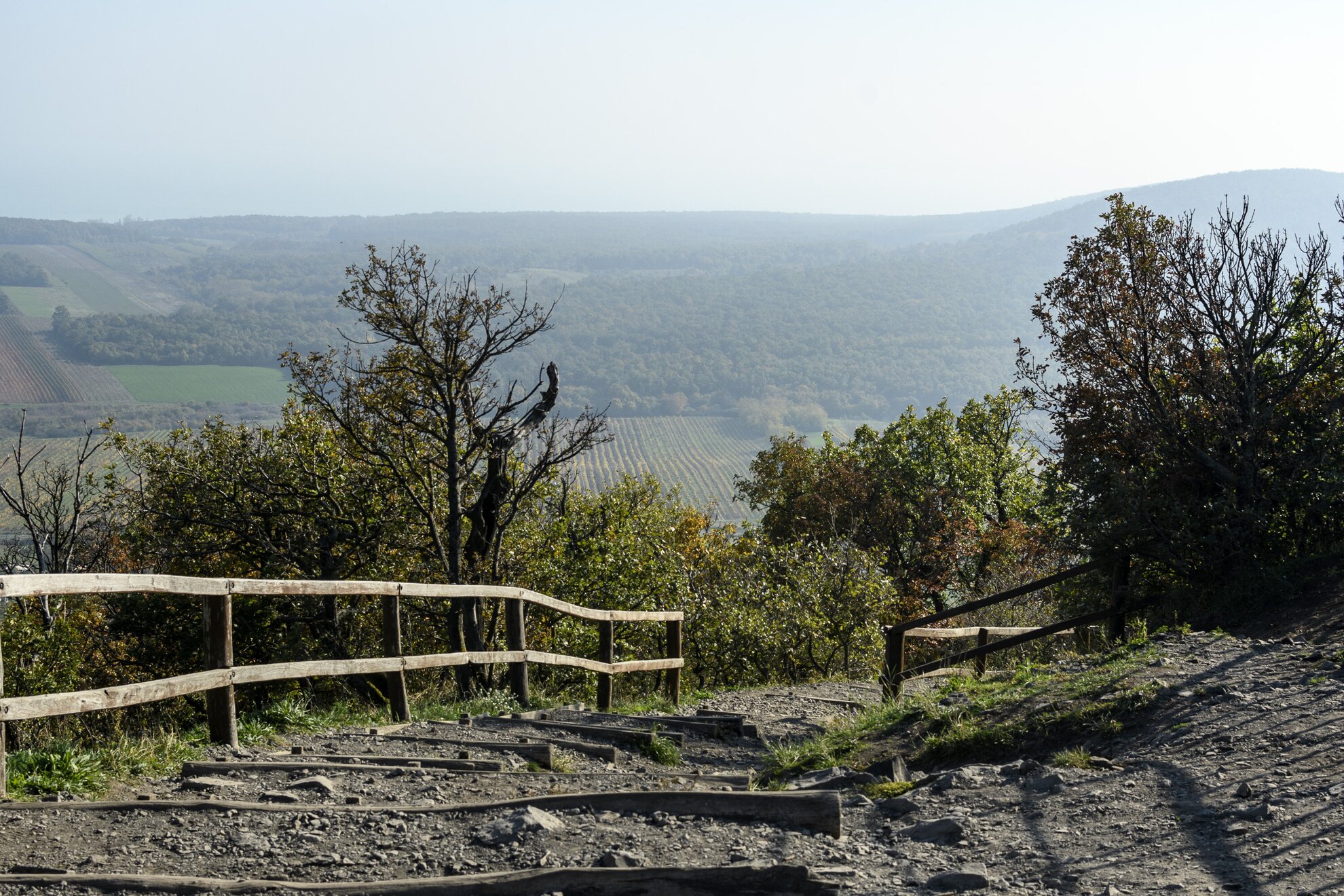
A metal railing on the top of the needle makes sure that we don’t fall into the depths below. We can mostly just see Lake Balaton from here, but we can also gaze in the direction of Balatonfüred and, on the opposite side, we can see Kapolcs and the hillsides of the region.
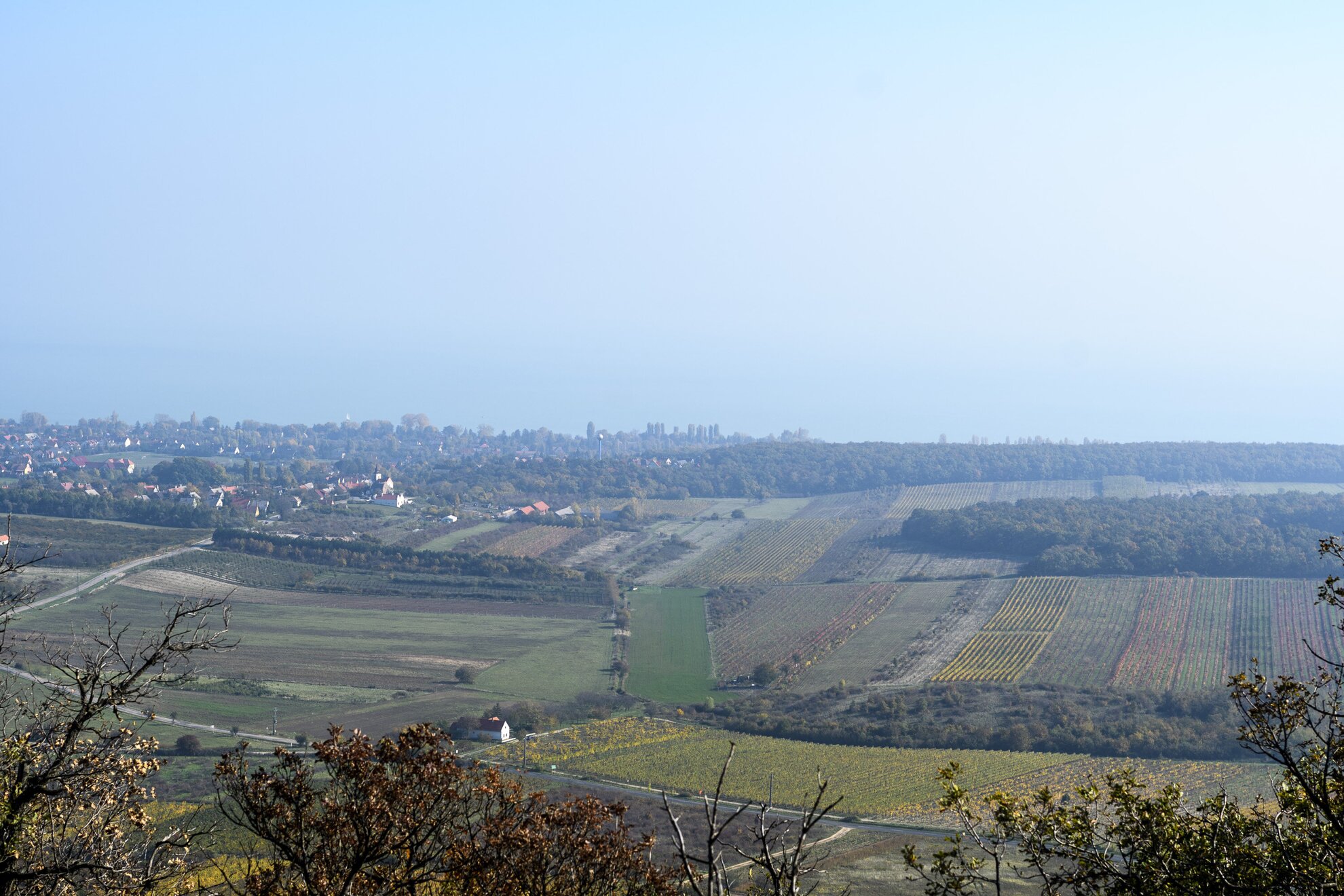
There’s another way down that leads to the aforementioned Squirrel Trail – the almost 9 kilometers long road leads to Monoszló.
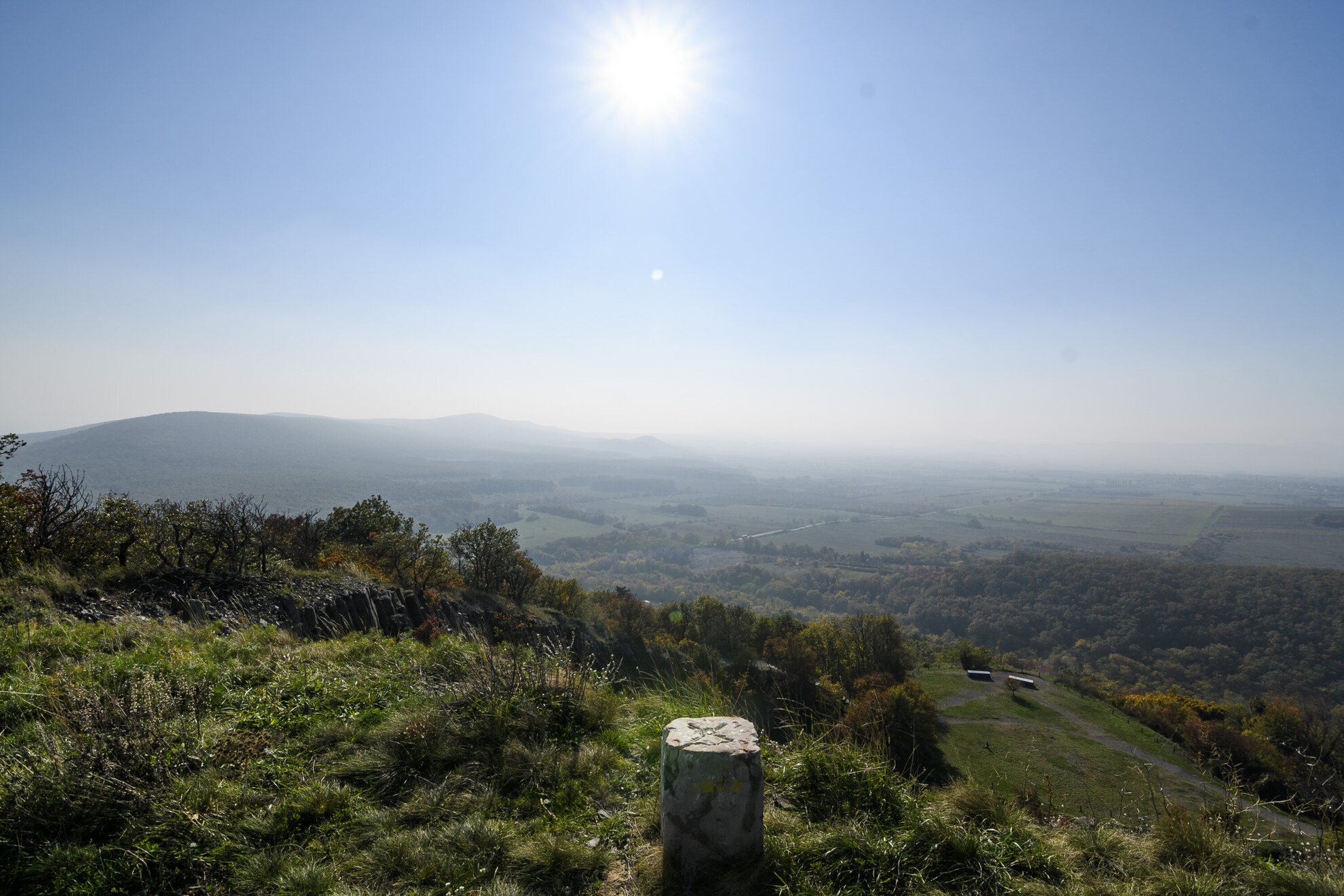
We decide to go down, and the road is a bit different in this direction than it was on the way to the top – our knees really aren’t thankful for all the stairs on the way down.
